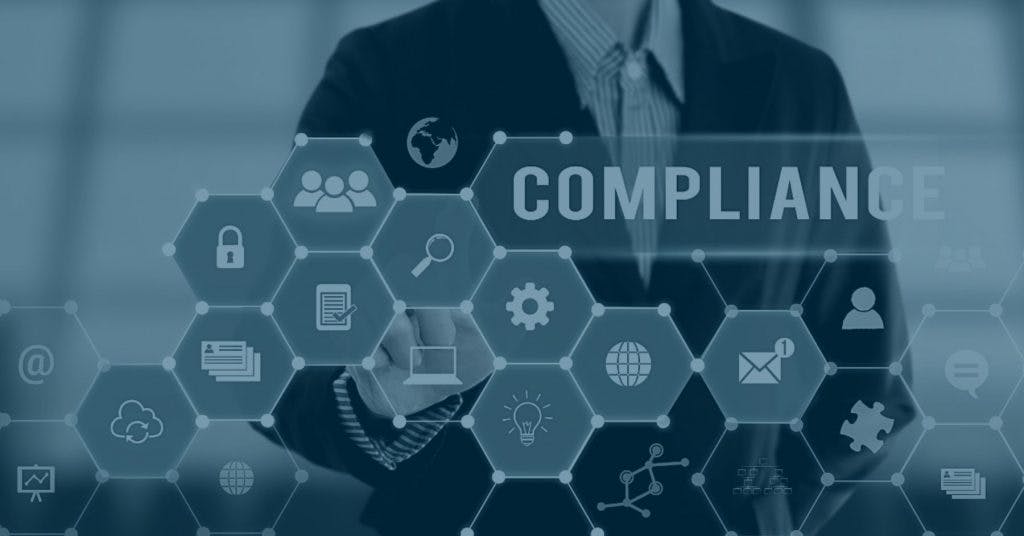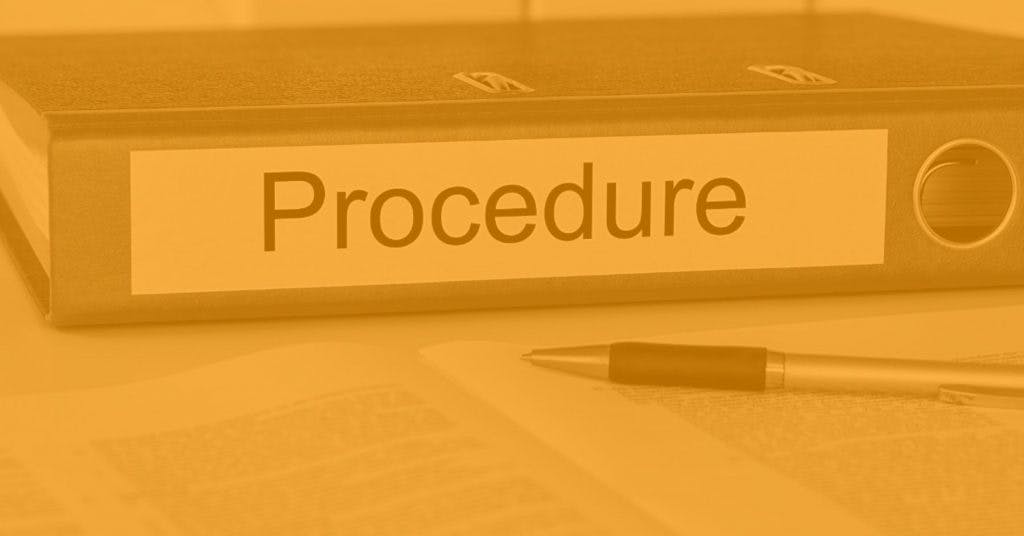It’s 2020, so business owners like you are used to everything going digital. However, the topics surrounding this change (like clouds and cybersecurity) might still be pretty new. Don’t worry, we’re here to shed light on concepts like these. One such topic is IT compliance, which is of special importance due to digital data breaches increasing 11% since 2018, and 67% since 2014.
IT compliance can help you reduce this threat and limit the damage of a cyberattack if one were to affect your business. Let’s dive into what this term means, why it’s important, and then outline the three building blocks you need to achieve it.
What is IT Compliance?
Compliance, of course, refers to following the rules. IT compliance focuses on how your business’s tech and data follow policies to keep things on the up and up both internally and externally. As you know, part of owning and running a company involves managing responsibility and risk for customer data and confidential internal knowledge. In 2019, the average cost of a data breach was .92 million, an intimidating figure but one which IT compliance can combat or even prevent.
Why Does It Matter?
Using IT tools and practices which are compliant with governmental (and internal) standards are absolute musts to run a secure, effective, and trustworthy organization. For example, HIPAA-compliance is necessary not only because it’s a federal regulation—it’s the ethical way to operate and maintain a good reputation. If people are entrusting you with their private medical and health information, you owe it to them as legally-protected customers and as human beings to protect that data.
IT compliance is how you do so. It focuses on your data storing and security measures: storing data from the past, checking on correct processes in the present, and safeguarding confidential details for the future. Current figures show an average of 7 million data records are compromised each day, which is 56 records per second. These numbers show the heavy responsibility IT compliance bears for your business.
Unfortunately, these figures may not come as much of a surprise with the context that 60% of IT professionals believe their cybersecurity budgets are lacking. While funding and personnel are legitimate concerns, for now, we’ll focus on optimizing your existing teams and resources to meet both types of compliance: regulatory and internal.
Regulatory & Internal Compliance
Your IT team needs to be aware of and have the resources to match up to these two categories of policies. Regulatory standards are governmental rules, like HIPAA, which keep things running within legal parameters. For your business, these mean decreasing the risk for illegal activity or incidents as well as any resulting litigation.
Internal compliance refers to actions taken by an organization in-house and not directly ordered by law. This kind of compliance may overlap with regulatory measures, but it also focuses on employees implementing best practices to retain customer trust and stay ahead of the competition. In fact, we’d recommend holding higher standards for your internal policies than the ones set by regulatory bodies. Taking initiative works well when it comes to compliance.
Your IT team and the technology in their purview are simultaneously plates you’ll need to keep spinning and amazing tools to keep your entire organization compliant. Now we’ve established the meaning and importance behind IT compliance, here are our three3 recommended building blocks to make sure your business achieves it
1. Connection
This building block is all about consolidation and ownership. To be blunt, IT should have control over all of your business’s digital assets: data, the platforms where it’s saved, the ways it’s shared, and the accounts interacting with it. Connecting all of this data into one central location is of the essence because IT professionals aren’t psychics. They can’t protect what they can’t see.
An easy way to achieve regulatory compliance is by only using platforms and applications which (on their own) meet regulatory and internal standards. One of the easiest ways to keep things connected and compliant is to keep all of your data in one shared system (like a private cloud, on-premise database, or some combination of both) instead of across multiple platforms. This connectivity is a great way for IT to maintain visibility, and if you use independently compliant tools (for example, a file-sharing system that meets HIPAA standards) you’re good to go from the very start.
Additionally, get your senior leadership from IT and other departments to demonstrate the importance of compliance and become examples of proper procedure. When the people in charge prioritize this concept, they actively connect compliance with your company’s culture and values.
2. Monitoring
This second building block comes easily once all of your business’s data is connected in a network controlled by IT. With all of your information in one place (or accessible from a single entry point), this team can monitor things via auto-alerts and reports, as well as manual checks. Thanks to this viewing power, they’ll be able to jump in and fix any issues by tracing access records and changing account permissions.
Keeping records and monitoring data access (whether approved or illicit) is useful for both preventing incidents of IT non-compliance and resolving crises quickly. When it comes to issues like HIPAA compliance, your team’s ability to access important digital evidence limits damage to your customers, employees, and your reputation not to mention the protection it provides in case of litigation.
Monitoring is also an important building block for IT compliance because it’s a preventative measure when granular permissions are at play. With the proper platform, your IT team can work across departments to provide or restrict user permissions on individual accounts. This ensures only the right people have access to the right files from the start—greatly decreasing the risk of information landing in the wrong hands. Keeping tabs on who’s accessing data, why, and any potential risks to your systems is always a good idea.
The Association of Corporate Counsel (ACC) suggests your entire business conducts a risk assessment at least once a year. These assessments help with IT compliance by exposing errors and potential weaknesses in your data storing systems. They also highlight where your organization is strong on compliance so you can continue and expand on those best practices throughout all of your technology.
In summary, a study from Rutgers School of Law found, “An organization that has made a robust effort to prevent and detect violations of the law by its employees and others acting for it will be treated less harshly than one that was indifferent to complying with the law.”
3. Communication
Keeping with our theme of building: locking down these first two building blocks will contribute to the final one. Once your IT team and resources have connected your business’s important files and monitored them to point out compliance strengths and weaknesses, you’ll be able to effectively communicate about your status to keep things headed in the right direction.
However, communication is the building block most at risk of falling outside of IT’s control. While connecting and monitoring are relatively low maintenance (barring their initial adoption), communication needs regular attention to keep customers and employees on the same page. Good communication ensures you meet regulatory IT compliance standards; great communication makes internal compliance a way of life at your organization. In turn, this will simplify meeting regulatory policies, like the high-standards of HIPAA.
Internal communication can be achieved by writing out the rules and regulations and keeping them stored and easily accessible in your connected platform. This gives team members one source of truth for both kinds of compliance. This portal may also be used to monitor who needs to complete (or brush up on) their compliance training.
To start, some of the most important topics for your IT department to communicate with other teams include:
- How employees should report misconduct
- The consequences and disciplinary measures for compliance violations
- Names and roles of team leaders and those responsible for compliance
It’s also a good idea to communicate about statistically common violations to provide a quick guide for situations like corporate corruption, bribery, incidents involving taxes, record-keeping/tampering, and general conflicts of interest (internal and external). These incidents often occur digitally, so having this information at your company’s disposal will help connect everyone with compliance resources. This also takes some pressure off of IT so they can continue maintaining the other two building blocks of compliance.
So, now you’re likely wondering, “What’s the easiest way to achieve IT compliance?” Well, you’re in the right place as these three building blocks are—excuse the unintended pun—built right into SmartFile.
SmartFile Keeps You Connected
SmartFile is our professional-grade file-sharing platform. It keeps your data connected with on-premise and cloud solutions that let you save and access your business’s files anytime, anywhere. This connection keeps customers, internal departments, and regulatory bodies on the same page, all while utilizing encryption and other security measures to ensure IT compliance. Thanks to measures like these, SmartFile is proud to meet HIPAA standards, among others.
Additionally, SmartFile can integrate Macs and PCs, as well as information across office applications like Outlook and Dropbox. This kind of smart connectivity keeps file-sharing and storing running smoothly amongst your employees and customers. In the same vein, SmartFile lets you literally connect using HTTPS, SFTP, FTPS, or WebDAV. Lastly, our platform features multi-site connection abilities so you can work across different brands and websites without missing a beat. Overall, SmartFile is the one-stop-shop for connection.
How SmartFile Helps with Monitoring
SmartFile offers granular permissions and access-tracking so your IT team has the tools to monitor for compliance. As we’ve already mentioned, an easy way to protect private data is to make sure only trusted users have access to it in the first place. Our platform keeps track of when files are accessed by which trusted accounts, and can automatically send notification emails to regulatory parties. This feature provides clarity to the who, what, when, and where of all file-shares.
These granular permissions can extend to files themselves as well. With SmartFile, you can limit the number of access events and downloads as well as set expiration dates on data. This lets the system automatically monitor activity to keep your business compliant (both with regulatory and internal policies) so IT can focus on other tasks.
SmartFile = Communication
Between automatic emails tracking activity, multi-site and platform connectivity, and 24/7 access to files, it seems like SmartFile already has compliance communication locked down. To add the cherry on top, our platform also features client portals, no limit on users, and general ease of use. The openness and fluidity inherent in our platform is part of what makes it compliant with HIPAA and other standards.
Customizing client portals keeps you, your outward-facing teams, and your brand in constant communication with customers so there are no surprises. Unlimited user accounts make it a breeze to add new clients and team members to the platform and all of its communications. We also designed SmartFile to be easy to use, so all of the features we’ve mentioned provide an excellent user experience and work in harmony.
Meeting regulatory and internal standards is important in every aspect of your business, but as the world continues to become more digitized, your tech will take center stage. Are you set up for success with these building blocks for IT compliance?



